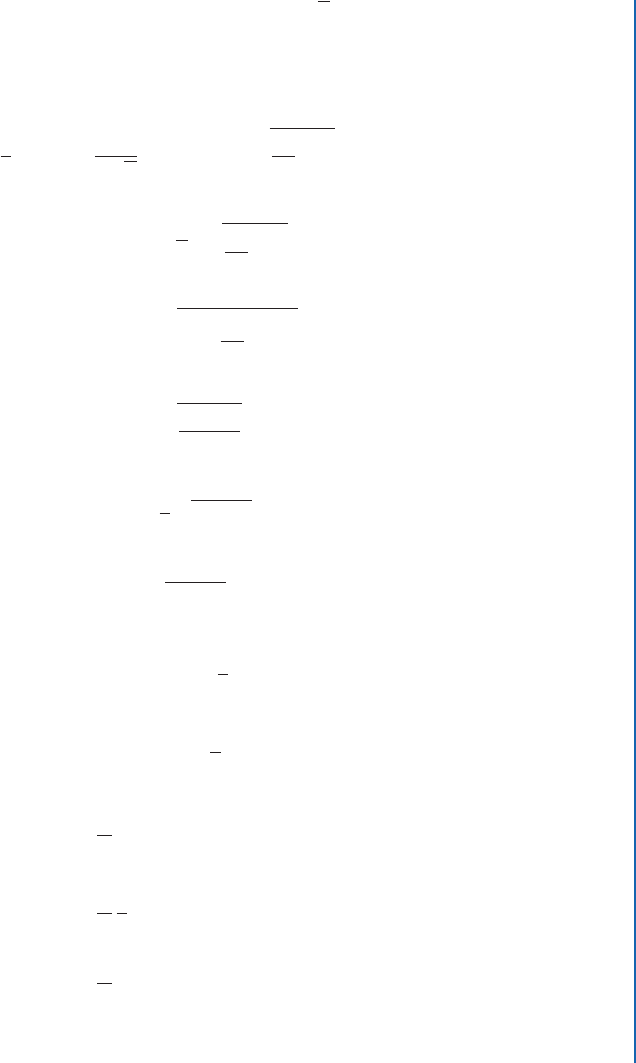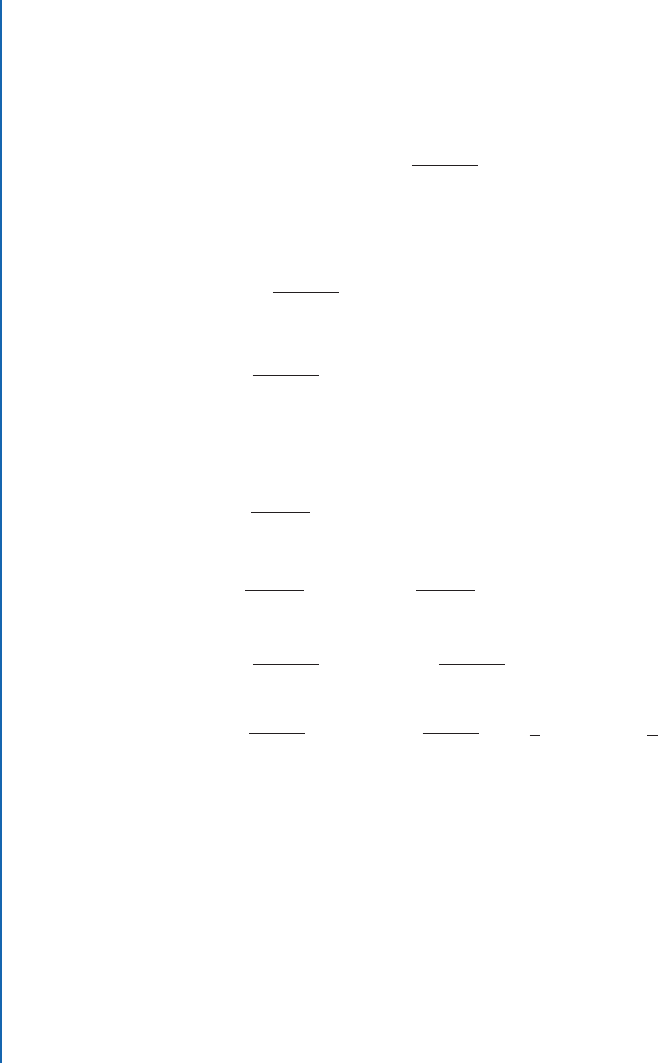
90 3. ADVANCED INTEGRATION
Z
2
0
p
4x
2
C 1 dx D
Z
‹
‹
sec./ .1=2/ sec
2
./ d
D
1
2
Z
‹
‹
sec
3
./ d (known integral)
D
1
4
.
sec./ tan./ C ln jsec./ C tan./j
/
ˇ
ˇ
ˇ
ˇ
‹
‹
D
1
4
p
4x
2
C 1 2x Cln j
p
4x
2
C 1 C 2xj
ˇ
ˇ
ˇ
ˇ
2
0
Now that we have performed the integral and transformed it back into x-space we can substitute
in the limits and get the arc length.
S D
1
4
p
17 4 C ln j
p
17 C4j
p
1 0 C ln j
p
1 C0j
D
1
4
4
p
17 Cln.
p
17 C4/
Š 4:65 units
˙
Arc-lengths integrals are often challenging. Let’s do one more example with a function chosen
to keep the difficulty from getting out of hand. is example looks for a general formula for the
arc length of a function.
Example 3.22 Find the length of y D x
3=2
from x D 0 to x D a.
Solution:
Since y
0
D
3
2
x
1=2
we see that
ds D
r
9
4
x C 1 dx D
1
2
p
9x C 4 dx

3.2. ARC LENGTH AND SURFACE AREA 91
is means that the desired arc length is:
S D
Z
a
0
1
2
p
9x C 4 dx
D
1
2
Z
a
0
p
9x C 4 dx
Let u D 9x C 4 so that
1
9
du D dx
D
1
2
Z
‹
‹
p
u
1
9
du
D
1
18
Z
‹
‹
u
1=2
du
D
1
18
2
3
u
3=2
ˇ
ˇ
ˇ
ˇ
‹
‹
Need to substitute back to x
D
1
27
.
9x C 4
/
3=2
ˇ
ˇ
ˇ
a
0
D
.
9a C 4
/
3=2
8
27
which is the desired arc length formula.
˙
We have already computed the volume of a solid that is enclosed by the graph of a function
rotated about the x-axis. e solids defined in this fashion also have a surface area, the slices of
which are circles.
Figure 3.6 shows examples of the circles that appear in such a rotation.

92 3. ADVANCED INTEGRATION
x
y
(4,2)
y D f .x/
Figure 3.6: Shown are some circles that are the “slices” of the surface area obtained by rotating
f .x/ about the x-axis.
Using Figure 3.6 as inspiration, we can compute surface area by integrating the circumference
of circles with radius f .x/. Since these circle follow the arc of f .x/, the correct type of change
is the differential of arc length, ds. is leads to the formula in Knowledge Box 3.6.
Knowledge Box 3.6
Surface area of rotation
If y D f .x/ is a continuous curve, then the surface area A obtained by
rotating f .x/ around the x-axis from x D a to x D b is:
A D 2
Z
b
a
f .x/ ds:

3.2. ARC LENGTH AND SURFACE AREA 93
Example 3.23 Find the surface area of rotation of y D
p
x about the x-axis from x D 0 to
x D 4.
Solution:
Since y D x
1=2
, y
0
D
1
2
x
1=2
D
1
2
p
x
. So: ds D
r
1
4x
C 1 dx Using the formula from
Knowledge Box 3.6 we obtain the surface area integral,
A D 2
Z
4
0
p
x
r
1
4x
C 1 dx
D 2
Z
4
0
s
x
1
4x
C 1
P
d x
D 2
Z
4
0
r
1 C4x
4
dx
D 2
Z
4
0
1
2
p
1 C4x dx
D
Z
4
0
p
1 C4x dx
Let u D 4x C 1,
1
4
du D dx
D
Z
17
1
u
1=2
1
4
du
D
4
Z
17
1
u
1=2
du
D
4
2
3
u
3=2
ˇ
ˇ
ˇ
17
1
D
6
17
3=2
1
Š 36:18 units
2
˙

94 3. ADVANCED INTEGRATION
Example 3.24 Find the surface area of rotation for y D e
x
from x D 0 to x D 2.
Solution:
Noting that y
0
D e
x
, we see that
ds D
p
e
2x
C 1 dx:
is means the surface area is:
A D 2
Z
2
0
e
x
p
e
2x
C 1 dx
D 2
Z
2
0
p
e
2x
C 1
.
e
x
dx
/
Let u D e
x
, then du D e
x
dx
D 2
Z
‹
‹
p
u
2
C 1 du (known integral)
D 2
u
p
u
2
C 1 C ln ju C
p
u
2
C 1j
ˇ
ˇ
ˇ
‹
‹
D 2
e
x
p
e
2x
C 1 C ln je
x
C
p
e
2x
C 1j
ˇ
ˇ
ˇ
2
0
D 2
e
2
p
e
4
C 1 C ln.e
2
C
p
e
4
C 1/
p
2 ln j1 C
p
2j
units
2
˙
e types of integrals that arise from arc length and rotational surface area problems are often
quite challenging. is justifies the large number of integration techniques we learned when we
studied methods of integration, several of which came up in this section.
If you study multivariate calculus more deeply, the differential of arc length will appear again for
tasks like computing the work done moving a particle along a path through a field. is section
is a bare introduction to the power and applications of the differential of arc length.
..................Content has been hidden....................
You can't read the all page of ebook, please click here login for view all page.
